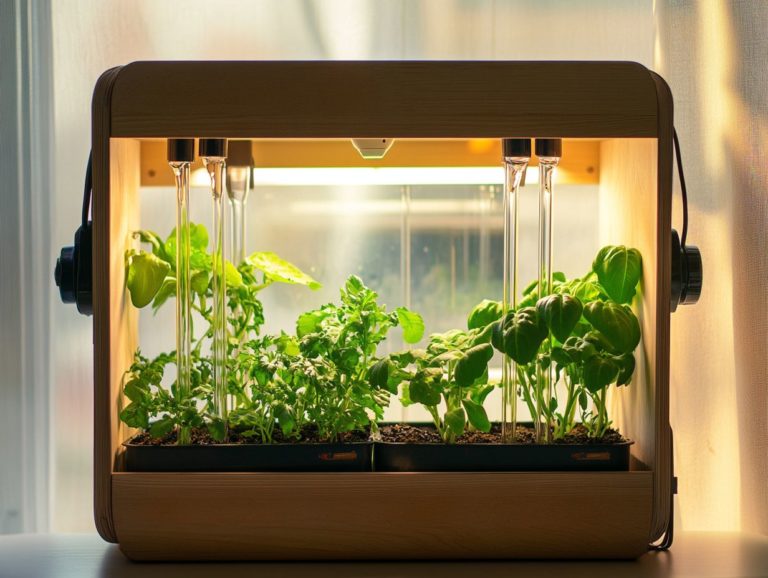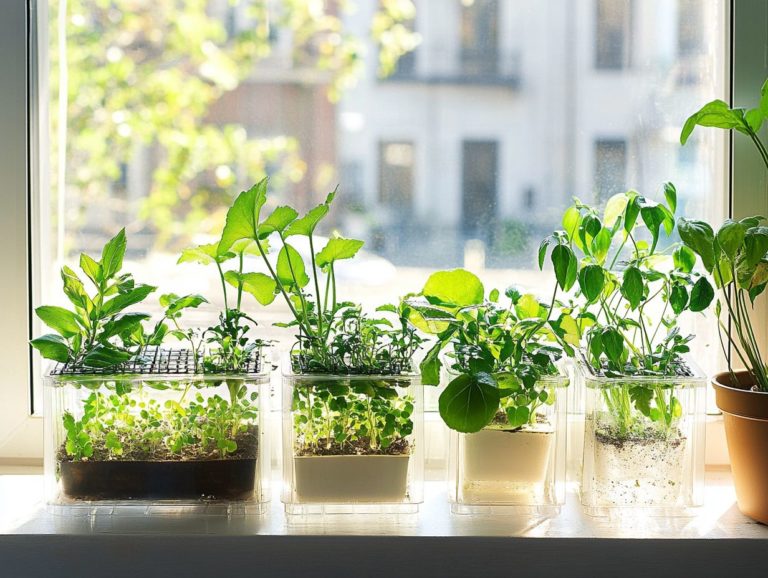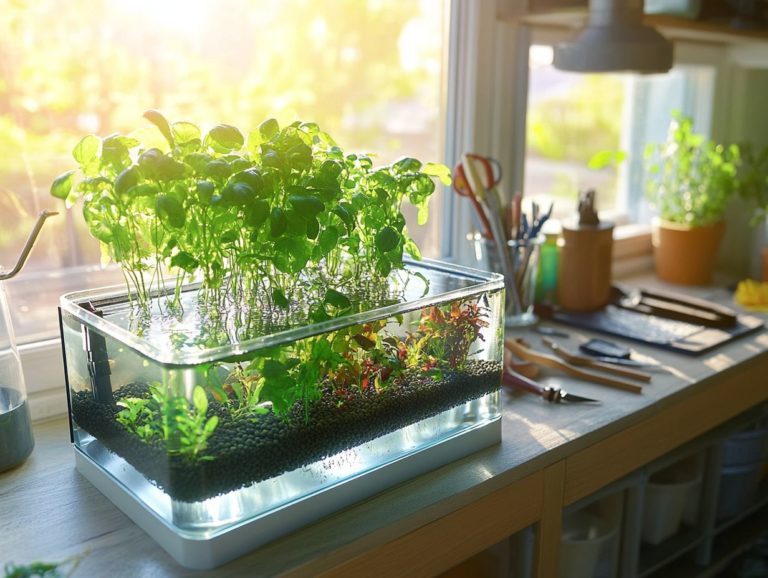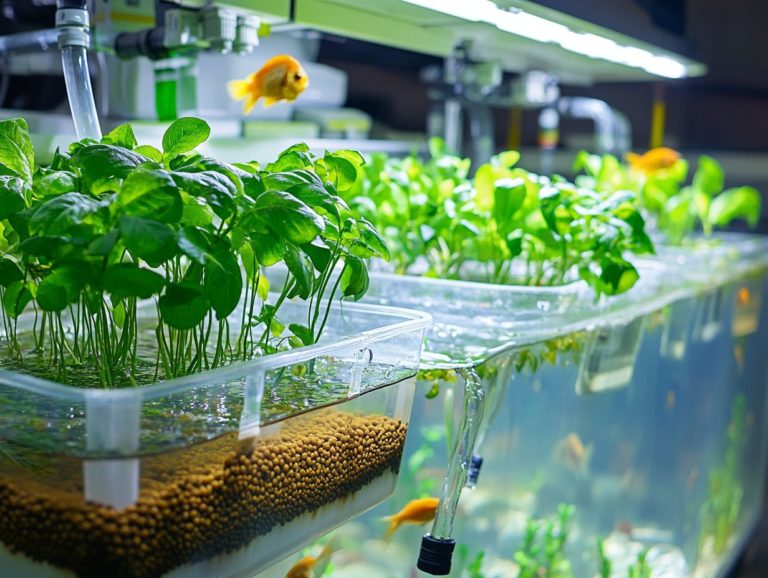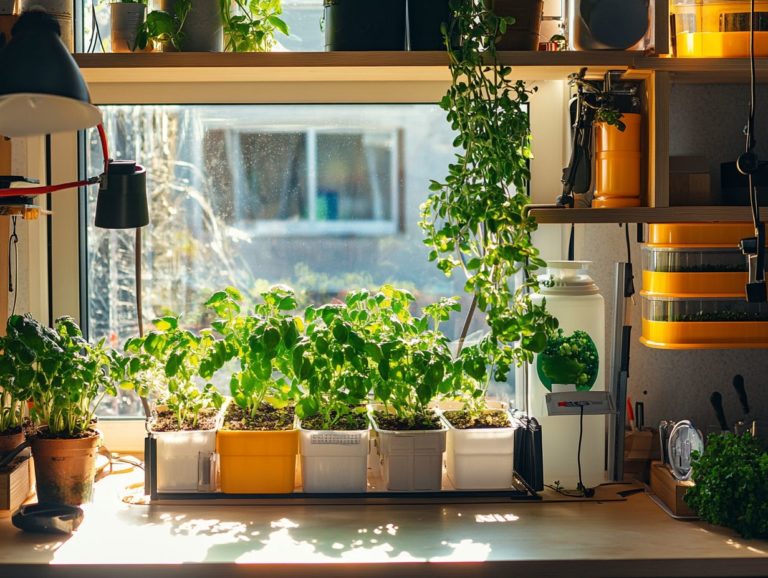Creating a Hydroponic Garden for Your Kitchen
Hydroponic gardening is revolutionizing the way you approach food cultivation, particularly in compact spaces like your kitchen. This innovative method enables you to grow fresh herbs and vegetables without the need for soil, making it an ideal solution for urban residents and budding gardeners alike.
Delve into the essentials of hydroponic gardening, from establishing your own indoor garden to selecting the most suitable plants, constructing your system, and nurturing your harvest. You’ll also uncover tips and recipes that will elevate your enjoyment of homegrown produce.
Whether you’re just starting out or aiming to refine your gardening expertise, you’ll discover all the resources necessary to embark on your hydroponic journey right from the comfort of your home.
Contents
- Key Takeaways:
- What is Hydroponic Gardening?
- Setting Up Your Kitchen Garden
- Choosing the Right Plants
- Building Your Hydroponic System
- Caring for Your Hydroponic Garden
- Harvesting and Using Your Homegrown Produce
- Frequently Asked Questions
- What is a hydroponic garden?
- Why should I create a hydroponic garden in my kitchen?
- What types of plants can I grow in a hydroponic garden for my kitchen?
- Do I need any special equipment to create a hydroponic garden in my kitchen?
- How much time and effort does it take to maintain a hydroponic garden in my kitchen?
- Are there any potential drawbacks to creating a hydroponic garden in my kitchen?
Key Takeaways:
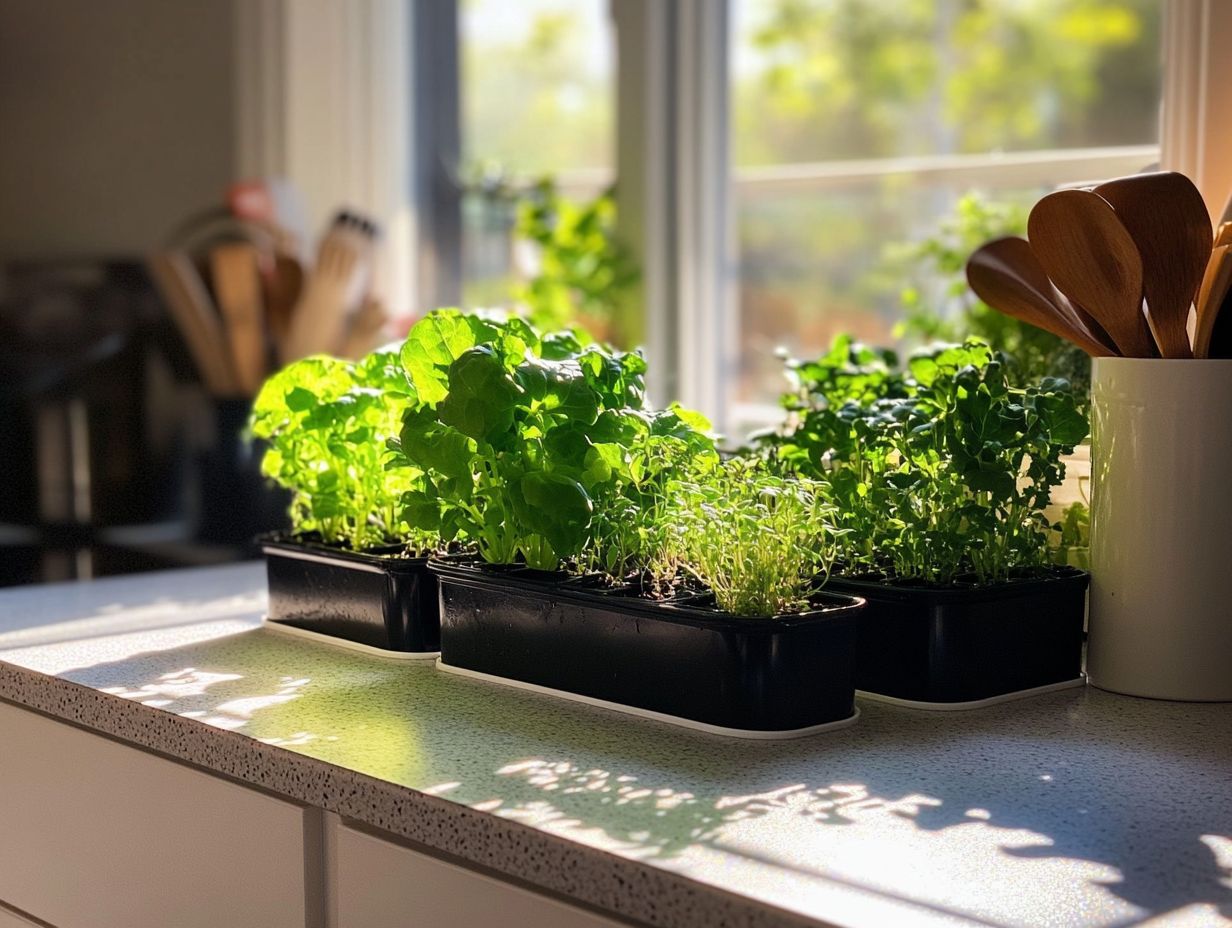
- Experience the benefits of hydroponic gardening in your kitchen: save space, reduce water usage efficiency in urban hydroponics, and grow fresh produce all year round.
- Choose the right plants for your indoor hydroponic garden, such as herbs, leafy greens, and cherry tomatoes.
- Follow a step-by-step guide to build your hydroponic system and maintain it by regularly monitoring water, nutrient levels, and pH levels.
What is Hydroponic Gardening?
Hydroponic gardening presents a cutting-edge approach to cultivating plants in compact spaces without the need for soil. In this method, roots float in a nutrient-infused water solution that supports plant growth. This is particularly advantageous for urban dwellers who grapple with limited space.
You can explore various systems, such as deep water culture and nutrient film technique, which is a method where a thin film of nutrient solution flows over the plant roots. These systems allow you to grow an impressive array of plants ranging from vibrant vegetables to aromatic herbs both indoors and outdoors.
By embracing hydroponics, you ll not only savor fresher produce but also optimize growth potential through meticulously controlled environments and efficient water usage.
Explanation and Benefits
The benefits of hydroponic gardening are truly remarkable, especially for you as an urban gardener looking for efficient ways to grow your own food with limited resources.
With this innovative approach, you can cultivate a diverse range of plants without the need for traditional soil. This leads to faster growth thanks to nutrient-rich solutions. Hydroponic systems significantly cut down on water consumption, employing methods that recycle water and minimize waste.
The space-saving designs enable you to transform small balconies or rooftops into thriving gardens, making it entirely possible to enjoy fresh produce even in the tightest of spaces.
Ultimately, hydroponic gardening not only supports sustainable practices but also gives you the power to take control of your sustainable food sources from your garden.
Setting Up Your Kitchen Garden
Establishing a hydroponic kitchen garden project is a fulfilling endeavor that can effortlessly transform your indoor environment into a vibrant indoor garden ecosystem. Imagine having fresh vegetables, herbs, and salad ingredients at your fingertips, offering easy access to homegrown food, while also bringing a touch of nature into your home.
This project lets you grow your own produce. It enriches both your meals and your living space.
Materials and Equipment Needed
To set up your hydroponic system successfully, you’ll need to gather specific materials and equipment, including PVC pipes, a reliable water pump for nutrient circulation, and various tools tailored to your chosen gardening technique.
Understanding the right components can significantly enhance the efficiency of your hydroponics setup. Opting for high-quality PVC materials ensures durability and helps maintain a stable environment for your plants.
Selecting a dependable water pump is crucial for sustaining nutrient flow and oxygen levels in the system. Don t overlook essential tools like nutrient reservoirs and pH testers; they are vital for monitoring and adjusting your growing conditions.
Investing in the right equipment and materials will ultimately lead to healthier plants and a more productive hydroponic garden.
Join the hydroponic revolution and learn how to build a simple hydroponic system to enjoy fresh produce right from your kitchen!
Choosing the Right Plants
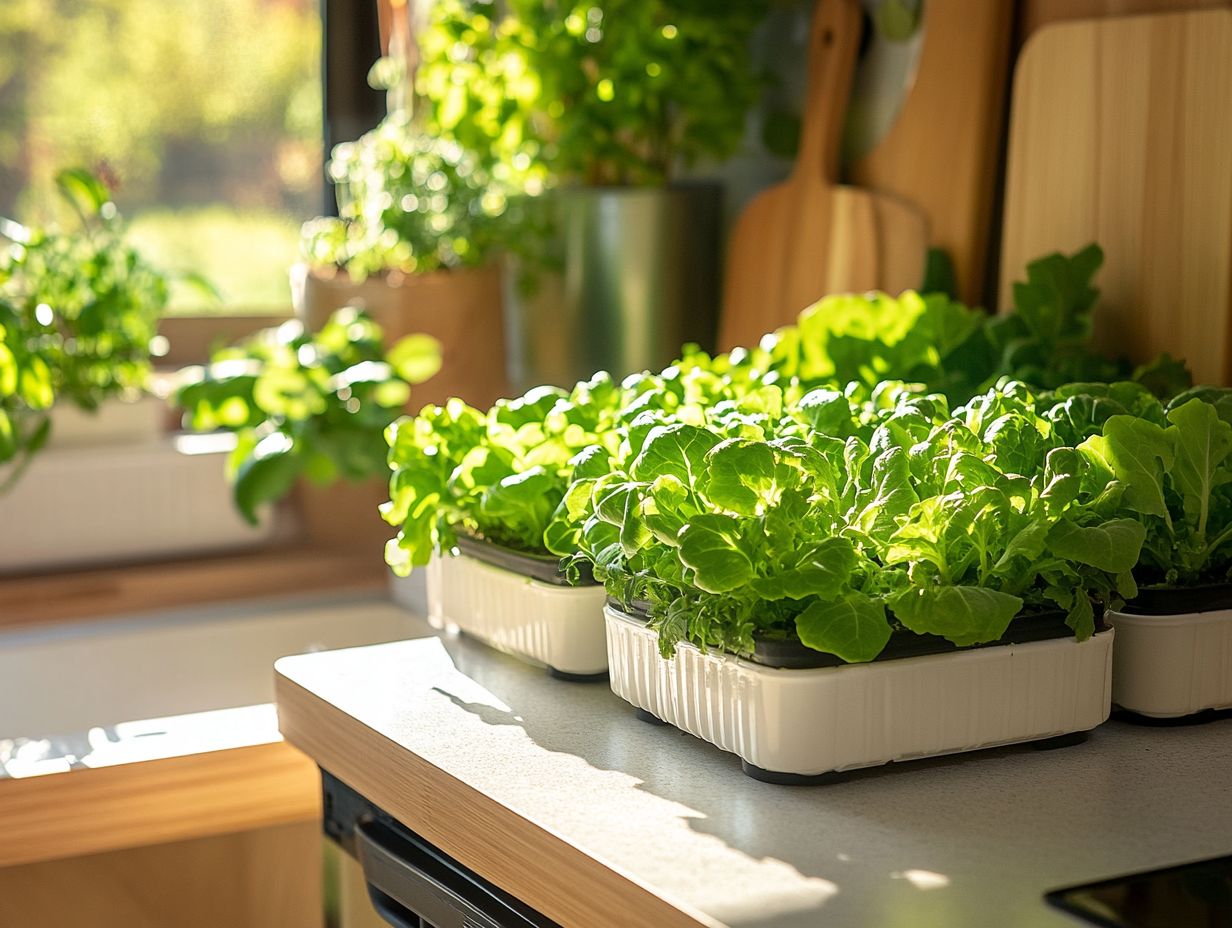
Selecting the right plants is vital in hydroponic gardening. Certain vegetables and herbs flourish far better in indoor environments suitable for diverse plants than others, significantly enhancing your chances of success.
Best Plants for Indoor Hydroponic Gardens
Some of the finest plants for your indoor hydroponic garden include leafy greens like lettuce and spinach, as well as beloved herbs like basil and mint. These plants thrive in hydroponic environments.
Lettuce enjoys cooler temperatures and grows rapidly, ready for harvest in just a few weeks. Spinach, with its impressive iron content, thrives under similar conditions, offering even greater nutrition for those looking to enhance their health.
Aromatic herbs such as basil and mint not only elevate the flavor of your dishes but also infuse your indoor space with delightful fragrances, making them perfect companions in your hydroponic setup.
By optimizing light exposure and maintaining proper pH levels, these greens and herbs provide a continuous supply of fresh produce right in your home. If you’re short on space, consider exploring the top hydroponic systems for small spaces.
Building Your Hydroponic System
Building your own hydroponic system is an exciting adventure! It lets you explore creative ways to grow plants right at home. You can experiment with various techniques for optimal plant growth while tailoring the design to perfectly align with your space and gardening aspirations.
Step-by-Step Guide
Creating your hydroponic system is a meticulous journey that involves a series of carefully orchestrated steps to ensure functionality and effectiveness, starting from material selection to connecting your water pump.
-
First, you ll want to choose an optimal location that bathes in ample light, whether it s the sun s golden rays or the glow of artificial sources.
-
Next, gather your materials: containers, net cups, growing mediums, and nutrient solutions tailored for optimal plant growth, specifically designed for hydroponic endeavors. Consider exploring hydroponic systems for home gardeners to determine which type aligns best with your space. Whether it’s deep water culture or nutrient film technique, each offers unique advantages.
-
It’s imperative to maintain a consistent water pH for nutrient absorption and nutrient levels to foster robust plant growth.
By following these strategies and honing in on vital details, even newcomers can cultivate a flourishing hydroponic garden. Take these steps now to enjoy your own thriving hydroponic garden!
Caring for Your Hydroponic Garden
Caring for your hydroponic garden is crucial for fostering the optimal growth and health of your plants. You need to carefully monitor your watering schedules and maintain the right nutrient levels within the system. Your attentive approach will yield a thriving garden that flourishes beautifully.
Watering, Nutrient Levels, and Maintenance

Proper watering and nutrient levels are vital to the success of your hydroponic garden. You’ll need to monitor these carefully and make periodic adjustments to avoid deficiencies and promote robust plant growth.
To achieve the best results, it’s crucial for you to regularly check the pH and the ability of water to conduct electricity of your nutrient solution. These indicators are essential for gauging nutrient availability. Adopting a systematic approach, like creating a schedule for testing and adjustments, will help you prevent chemical imbalances that could stunt growth.
Paying attention to plant responses such as leaf color and growth rate will provide you with valuable insights into their nutrient needs. By staying proactive in these efforts, you can foster healthier plants, ultimately leading to a more abundant harvest.
Regular maintenance not only sustains the efficiency of your system but also enhances the overall quality of your yield.
Harvesting and Using Your Homegrown Produce
Harvesting your homegrown produce from a hydroponic garden is not just rewarding; it provides you with the freshest ingredients for a variety of delicious recipes, enhancing your culinary experience right in your kitchen.
Tips and Recipes for Using Your Hydroponic Plants
Incorporating hydroponic plants into your meals is easy and rewarding. You have many recipes that celebrate the freshness and flavors of your homegrown herbs and vegetables.
By choosing hydroponic produce, you enjoy vibrant colors and enhanced tastes while having nutrient-rich ingredients at your fingertips. Imagine lush basil and crisp lettuce cooking possibilities are endless and ready to elevate your culinary creations.
A simple salad can become a gourmet experience with a sprinkle of freshly harvested herbs. Quick stir-fries burst with flavor when accented by a handful of bright greens.
Embracing hydroponics in your cooking ignites creativity. You will be inspired to try new recipes and delightful combinations that your family will love.
Frequently Asked Questions
What is a hydroponic garden?
A hydroponic garden is a method of growing plants in water without soil. This method is perfect for small spaces, such as kitchens, and allows you to grow fresh produce all year round.
Why should I create a hydroponic garden in my kitchen?
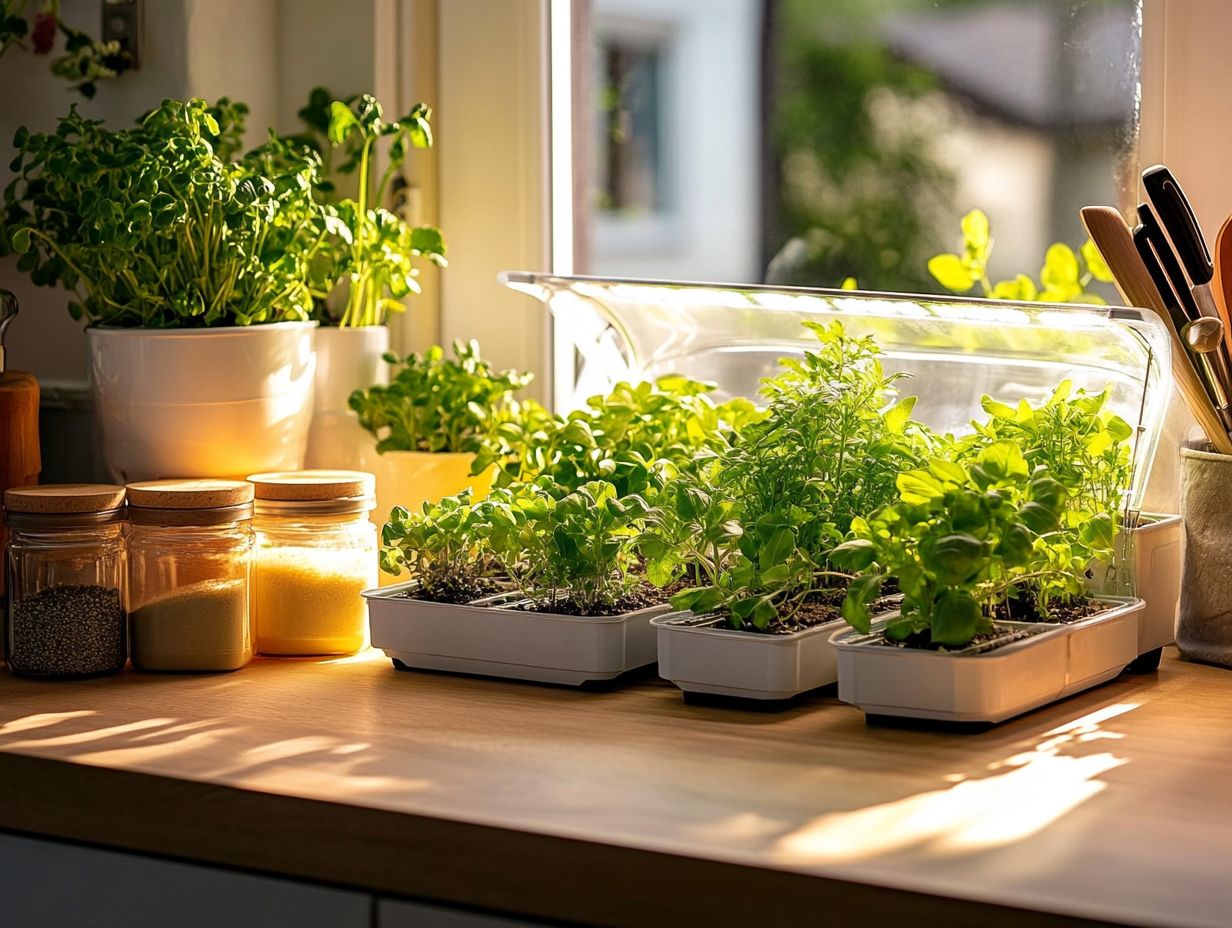
Creating a hydroponic garden in your kitchen offers many benefits, including easy access to fresh produce and the ability to control the growing environment. It also adds a touch of greenery, making your kitchen more inviting.
What types of plants can I grow in a hydroponic garden for my kitchen?
You can grow various plants in your hydroponic kitchen garden, including leafy greens, herbs, tomatoes, and strawberries. Choose plants that thrive in water and fit comfortably in your space.
Do I need any special equipment to create a hydroponic garden in my kitchen?
No special equipment is required to create a hydroponic garden. Basic household items like plastic containers, tubes, and a water pump can help you build your own DIY system.
How much time and effort does it take to maintain a hydroponic garden in my kitchen?
The time and effort for maintenance depend on your setup’s size and complexity. Most hydroponic gardens are low-maintenance, requiring periodic monitoring of water and nutrients, as well as pruning and harvesting.
Are there any potential drawbacks to creating a hydroponic garden in my kitchen?
While there are many benefits to a hydroponic kitchen garden, potential drawbacks include initial equipment costs, the need for electricity and water, and possible equipment malfunctions. However, with planning and maintenance, these issues can be minimized.
Get started on your hydroponic garden today and enjoy fresh produce at your fingertips!

